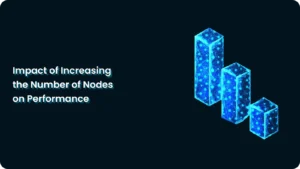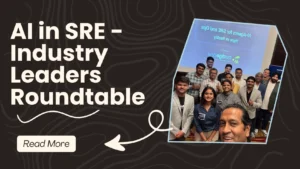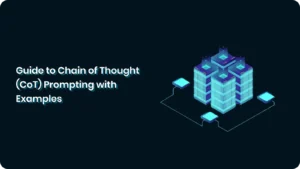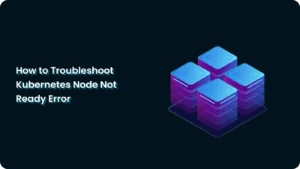Difference between AI Agents and Agentic AI
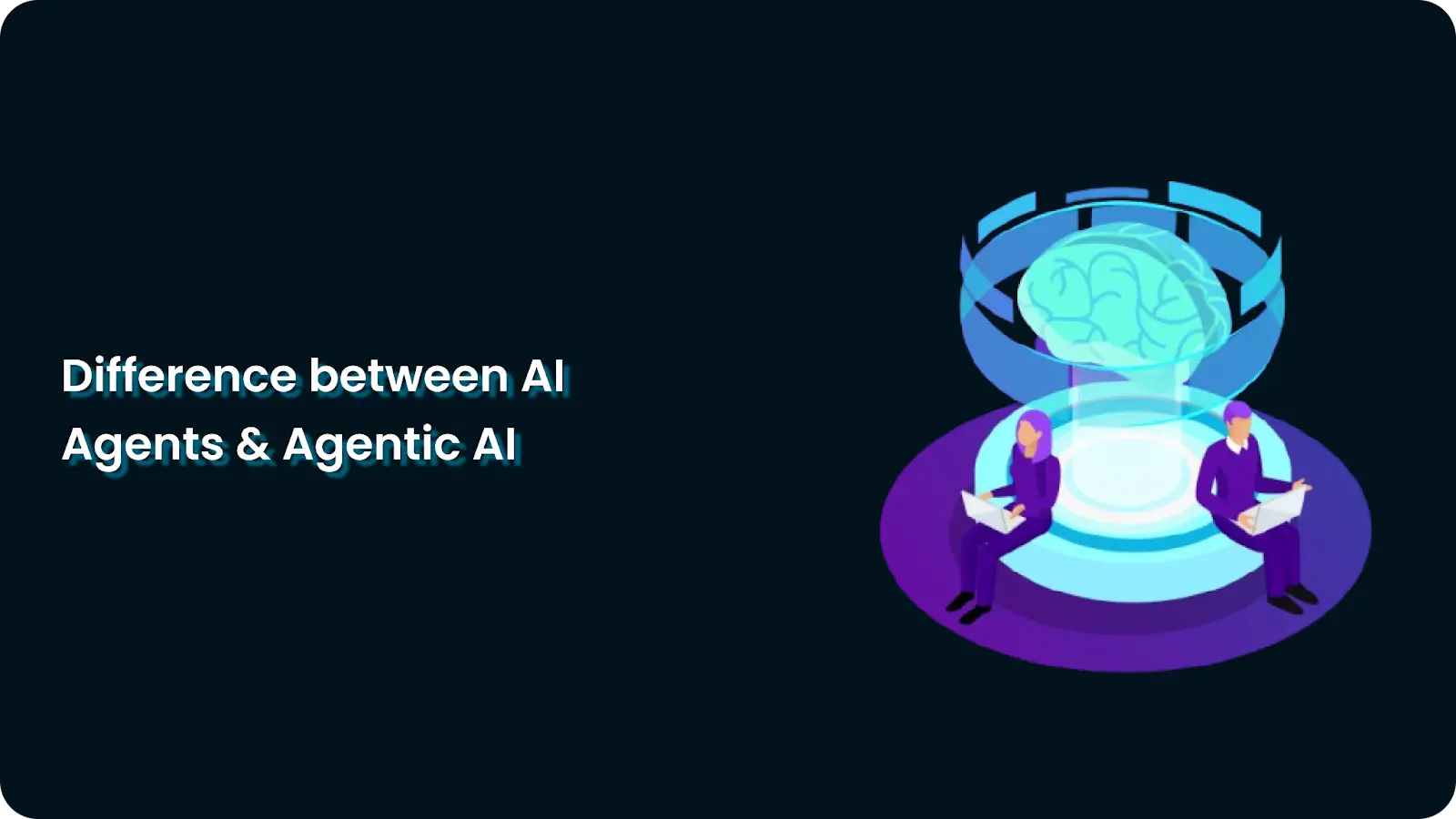
Artificial intelligence is evolving rapidly, introducing new concepts and frameworks that shape how machines interact with the world. Two commonly discussed terms in this evolution are AI Agents and Agentic AI. While they may sound similar, they serve very different purposes and have distinct functionalities.
AI Agents are designed to perform specific tasks based on predefined rules, such as chatbots that answer customer queries or fraud detection systems that monitor financial transactions. In contrast, Agentic AI operates with a higher degree of autonomy, reasoning, and adaptability, enabling it to self-direct workflows, refine its own learning, and make independent decisions.
Understanding the differences between these two AI paradigms is crucial as businesses and developers look to integrate more intelligent, adaptive, and efficient AI systems into their workflows. In this blog, we’ll explore:
- What an AI agent is and how it works.
- What Agentic AI is and how it differs from AI agents.
- Real-world applications, benefits, and limitations of both.
By the end, you’ll have a clear understanding of how AI agents and Agentic AI compare when to use them, and what the future holds for both. Let’s dive in!
What is an AI Agent?
An AI agent is a system designed to interact with its environment, gather information, process it, and take appropriate actions to achieve a specific goal. These agents operate based on predefined rules, logic-based decision-making, or advanced machine-learning models.
AI agents play a crucial role in automating tasks, optimizing processes, and assisting users across various domains. They are widely used in customer service, finance, healthcare, cybersecurity, and enterprise automation, among other fields.
Core Characteristics of AI Agents
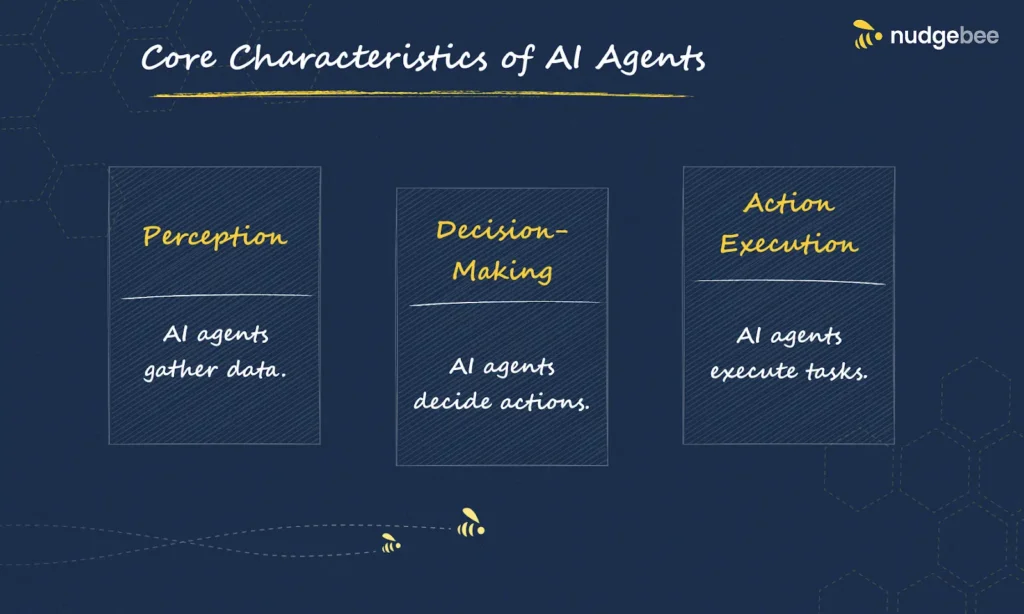
- Perception: AI agents collect data from their environment through sensors, APIs, or user inputs.
- Decision-Making: Based on predefined rules, logic-based frameworks, or machine learning models, AI agents determine the best course of action.
- Action Execution: AI agents carry out the required tasks, such as responding to a user query, adjusting system settings, or flagging fraudulent transactions.
Types of AI Agents and Their Functionality
AI agents vary in complexity and capabilities, ranging from simple rule-based systems to sophisticated agents capable of autonomous decision-making. Here are the main types of AI agents and their typical applications:
1. Simple Reflex Agents
Functionality: These agents respond directly to specific stimuli without considering historical data or future implications. They operate based on a set of predefined if-then rules.
Applications:
- Spam filters that classify emails as spam based on specific keywords.
- Temperature control systems that adjust the AC when room temperature changes.
- Basic chatbots that respond to predefined queries without contextual awareness.
2. Model-Based Reflex Agents
Functionality: Unlike simple reflex agents, these agents maintain an internal representation of their environment, allowing them to track past actions and make decisions based on a broader context.
Applications:
- Autonomous vehicles that use real-time sensor data to navigate roads.
- Smart thermostats like Nest learn user preferences over time.
- Dynamic pricing models in e-commerce that adjust prices based on demand and inventory.
3. Goal-Based Agents
Functionality: These agents operate with a defined objective, evaluating different possible actions to determine the best course of action. They use algorithms such as search-based problem-solving and reinforcement learning.
Applications:
- AI-powered investment advisors that analyze financial markets and recommend portfolio changes.
- AI gaming bots that make strategic decisions to win a game.
- AI-based recruiting systems that filter job applicants based on skills and experience.
4. Utility-Based Agents
Functionality: These agents consider multiple factors and assign values (or utilities) to different actions, selecting the one that maximizes the overall benefit.
Applications:
- Autonomous drones that optimize flight paths based on weather conditions.
- Personalized recommendation engines that suggest content based on user preferences.
- Self-driving cars that balance speed, safety, and fuel efficiency.
5. Learning Agents
Functionality: These agents continuously learn from their interactions, improving their decision-making over time. They utilize techniques such as reinforcement learning and deep learning to adapt to new environments.
Applications:
- AI-powered fraud detection systems that evolve to detect new fraud patterns.
- Virtual personal assistants like Siri and Alexa that improve responses based on user preferences.
- Healthcare AI models that refine diagnostic accuracy based on new medical data.
Typical Applications of AI Agents
AI agents are used in various industries to automate processes, optimize workflows, and enhance decision-making. Some common applications include:
- Customer Support: AI chatbots handle customer inquiries, reducing wait times and improving efficiency.
- Healthcare: AI diagnostic tools analyze medical data to detect early signs of diseases.
- Finance: Fraud detection agents analyze transaction patterns to prevent fraudulent activities.
- Cybersecurity: AI-powered security agents detect and mitigate potential cyber threats in real-time.
- Manufacturing: AI-driven robots optimize production lines and reduce operational downtime.
AI agents serve as the foundation for automation and intelligent decision-making across industries. However, while AI agents focus on specific tasks, Agentic AI takes it a step further by operating with a higher level of autonomy, reasoning, and adaptability. In the next section, we’ll explore what Agentic AI is and how it differs from traditional AI agents.
What is Agentic AI?
As AI evolves, Agentic AI represents a major shift from traditional AI agents. Unlike conventional AI systems that rely on predefined rules or supervised learning models, Agentic AI operates with a higher degree of autonomy, reasoning, and adaptability. These intelligent systems can set their own objectives, plan complex tasks, and adjust their actions dynamically without human intervention.
A prime example of Agentic AI is AutoGPT, which can independently research, strategize, execute multi-step workflows, and refine its outputs based on changing conditions—going beyond traditional AI agents that simply follow instructions.
Key Characteristics of Agentic AI
1. Goal-Oriented Autonomy
- Unlike traditional AI agents, which perform isolated tasks, Agentic AI works toward long-term objectives by analyzing and planning multiple steps.
- Example: An AI research assistant that generates new hypotheses, searches for relevant data, and refines conclusions without human prompts.
2. Multi-Step Reasoning and Task Execution
- Agentic AI can break down complex problems into smaller tasks, execute them sequentially, and adjust as needed.
- Example: AI-driven financial models that monitor markets, adjust trading strategies, and optimize portfolios without constant human input.
3. Self-Learning and Adaptive Improvement
- Unlike traditional AI models that require manual retraining, Agentic AI continuously refines its approach based on experience and interactions.
- Example: Self-learning cybersecurity agents that detect new hacking techniques and adjust defenses accordingly.
4. Context Awareness and Dynamic Decision-Making
- Agentic AI understands and responds to real-world contexts, dynamically optimizing its decisions rather than blindly following preset rules.
- Example: AI-powered customer service bots that adjust tone and response strategy based on user sentiment and past interactions.
5. Collaboration with Other AI Agents
- Agentic AI doesn’t just operate alone; it can coordinate with multiple AI agents to accomplish broader objectives.
- Example: AI-powered supply chain management systems where different AI agents handle logistics, inventory, and delivery schedules seamlessly.
Key Differences Between AI Agents and Agentic AI
AI agents and Agentic AI differ significantly in how they operate, learn, and execute tasks. While AI agents function within predefined boundaries, Agentic AI systems exhibit a higher level of autonomy and reasoning. Below is a detailed comparison:
| Feature | AI Agents | Agentic AI |
| Autonomy Level | Executes specific tasks based on predefined logic. | Operates with higher autonomy, making self-directed decisions. |
| Learning Ability | Typically follows rule-based or ML-based logic. | Continuously learns, adapts, and refines decision-making. |
| Complexity | Less complex; built for specialized use cases. | More complex; designed for broader, evolving objectives. |
| Flexibility | Works within a set scope and limited adaptability. | Dynamically adjusts its approach based on new data and changing conditions. |
| Decision-Making | Relies on static rules or machine-learned patterns. | Uses reasoning and problem-solving to strategize actions. |
| Examples | Chatbots, recommendation engines, voice assistants. | AutoGPT, multi-step workflow automation, AI research agents. |
The main distinction lies in autonomy and adaptability. AI agents assist in decision-making, but Agentic AI can independently plan, learn, and act without explicit instructions, making it better suited for complex, multi-step tasks.
Applications of AI Agents vs. Agentic AI
AI agents and Agentic AI both serve critical roles across industries, but their applications vary significantly based on complexity and autonomy levels.
AI Agents in Real-World Applications
AI agents excel at task-specific automation, making processes more efficient while reducing manual intervention.
- Customer Support
- AI chatbots provide instant responses to FAQs, automate ticket handling, and assist human agents.
- Example: AI-driven chatbots in banking that assist with account inquiries and transactions.
- Healthcare
- AI-based diagnostic tools help analyze medical reports, detect anomalies, and suggest potential diagnoses.
- Example: AI-assisted radiology tools that scan medical images for early disease detection.
- Finance
- AI fraud detection systems analyze real-time transactions and flag suspicious activities.
- Example: Credit card fraud detection models that monitor unusual spending patterns.
Agentic AI in Real-World Applications
Agentic AI is more suitable for tasks that require continuous learning, problem-solving, and multi-step execution.
- Research & Innovation
- AI-driven research assistants autonomously generate hypotheses, analyze literature, and propose new scientific experiments.
- Example: AI systems in pharmaceutical R&D that test and refine drug formulations.
- Autonomous Workflows
- AI agents that write, debug, and refine their own code without manual intervention.
- Example: GitHub Copilot X assists developers by generating optimized code snippets and detecting bugs.
- Self-Adapting Systems
- AI models that adjust strategies dynamically based on real-world feedback.
- Example: Autonomous investment management systems that refine stock trading strategies based on market trends.
While AI agents streamline processes, Agentic AI introduces greater flexibility and decision-making power, making it suitable for dynamic, unpredictable environments where AI must adapt on its own.
Benefits and Limitations of AI Agents and Agentic AI
Each AI paradigm comes with its own advantages and limitations, shaping where and how they can be effectively implemented.
Benefits of AI Agents
- Task automation reduces manual effort – AI agents handle repetitive, rule-based tasks efficiently.
- Can be easily integrated into business processes – AI agents work seamlessly with existing software and workflows.
- Improves operational efficiency with minimal risk – Helps organizations optimize customer service, finance, and healthcare operations.
Limitations of AI Agents
- Limited adaptability – AI agents struggle to operate outside predefined rules and tasks.
- Requires human intervention for complex decision-making – Not suited for dynamic problem-solving or strategy-based tasks.
Benefits of Agentic AI
- Can handle complex, multi-step workflows with minimal supervision – Ideal for tasks requiring long-term planning and continuous improvement.
- Self-improving systems enhance efficiency over time – AI refines its strategies and processes dynamically.
- Enables innovation by generating new ideas and insights – Useful in R&D, business strategy, and creative industries.
Limitations of Agentic AI
- Higher computational costs and infrastructure demands – Requires significant resources to train and operate effectively.
- Increased risks of unintended behaviour due to autonomy – Agentic AI models may act in unpredictable ways without proper oversight.
While AI agents provide reliability and efficiency in structured environments, Agentic AI is designed for tasks requiring independent thought, strategy, and adaptability. Choosing the right approach depends on the complexity and flexibility required for a given application.
Ethical and Security Concerns
As AI agents and Agentic AI become more advanced, they raise significant ethical and security concerns that must be addressed to ensure responsible and safe deployment.
AI Agent Risks
- Privacy Concerns in Customer Service Chatbots
- AI-powered chatbots process vast amounts of personal and sensitive data, such as banking details, health records, and personal inquiries.
- If not properly secured, these systems can be vulnerable to data leaks or misuse.
- Example: AI chatbots used in banking could accidentally expose confidential user information due to a flawed response.
- Bias in AI-Driven Decision-Making Models
- Many AI models inherit biases from the training data, leading to unfair outcomes.
- Example: AI-driven hiring algorithms have been found to favor certain demographics over others due to historical biases in hiring practices.
- Addressing AI bias requires better training data, continuous monitoring, and transparency in decision-making processes.
Agentic AI Risks
- Loss of Control: Autonomous AI May Act in Unpredictable Ways
- Since Agentic AI operates independently, it can take unintended actions without human oversight.
- Example: An AI trading system making aggressive trades in volatile markets, leading to financial crashes.
- Mitigation: Implement human-in-the-loop mechanisms to oversee and override AI decisions when necessary.
- Security Vulnerabilities: AI Systems Making Unchecked Decisions Can Pose Risks
- Agentic AI interacting with critical systems (e.g., healthcare, security, financial markets) may make errors or be exploited by attackers.
- Example: Deepfake AI used in cyberattacks to impersonate executives and manipulate financial transactions.
- Solution: Implement strict cybersecurity measures, robust auditing, and AI explainability frameworks to enhance accountability.
The Future of AI Agents and Agentic AI
The future of AI agents and Agentic AI is promising, with advancements leading to more intelligent, context-aware, and reliable AI systems.
What’s Next?
- AI Agents Will Evolve with Better Contextual Awareness
- AI agents will understand user intent better and provide more accurate and human-like interactions.
- Example: Chatbots that recognize emotions and adjust responses accordingly.
- Agentic AI Will Move Toward Safer, More Reliable Self-Learning Models
- AI systems will incorporate self-regulation mechanisms to prevent unwanted behaviors.
- More AI governance frameworks will ensure responsible autonomy in AI decision-making.
Industry Adoption
- Tech Companies Are Investing in Multi-Agent AI Systems
- AI-driven multi-agent systems are being developed to automate complex workflows in finance, cybersecurity, and logistics.
- Example: Google’s DeepMind AI agents collaborating to solve real-world business problems.
- Governments and Policymakers Are Regulating AI Development
- With increasing concerns over AI ethics, global governments are implementing regulatory guidelines for safe AI use.
- Example: EU AI Act introduces transparency and risk assessment rules for AI-powered decision-making.
The future of AI agents and Agentic AI will focus on balancing autonomy with safety, ensuring AI-driven systems operate ethically, securely, and efficiently.
How NudgeBee Leverages AI Agents for Intelligent Automation
NudgeBee utilizes AI agents to optimize Kubernetes troubleshooting and automate operational workflows, reducing manual intervention and enhancing efficiency.
Key Features of NudgeBee’s AI Agent Architecture
- Automates Troubleshooting for Kubernetes Environments
- Identifies and resolves Node Not Ready, CrashLoopBackOff, and other Kubernetes issues automatically.
- Detects and Resolves Issues with Minimal Human Intervention
- AI-driven agents monitor cluster health, detect anomalies, and suggest fixes in real-time.
- Continuously Improves Through AI-Driven Insights
- Leverages machine learning to improve diagnostic accuracy and enhance cluster performance over time.
NudgeBee provides real-time monitoring, proactive issue detection, and guided remediation, making Kubernetes troubleshooting faster and more efficient.
Explore how NudgeBee’s AI-driven agents enhance troubleshooting efficiency and reduce operational downtime.
Conclusion
The difference between AI agents and Agentic AI lies in their autonomy, complexity, and adaptability.
AI agents are designed for specific tasks and function effectively within structured environments where predefined rules and models guide their decisions. They play a crucial role in customer support, fraud detection, IT incident management, and workflow automation, where efficiency and precision are key. These agents rely on pre-trained models or rule-based logic to execute their tasks and require human intervention for complex or unexpected scenarios.
Agentic AI, on the other hand, represents a more advanced and autonomous form of AI. Unlike traditional AI agents, it self-directs its workflows, continuously learns from interactions, and makes independent decisions in unstructured environments. This capability makes it ideal for managing multi-step processes, conducting autonomous research, enhancing cybersecurity, and driving self-learning systems with minimal human oversight. Instead of simply following instructions, Agentic AI can strategize, refine its actions, and adapt to changing circumstances.
As AI continues to evolve, the integration of AI agents and Agentic AI will reshape automation, business intelligence, and high-level decision-making. AI agents will remain essential for streamlining repetitive processes and improving operational efficiency, while Agentic AI will push the boundaries of self-improving, independent AI-driven workflows, creating smarter, more adaptive AI systems capable of solving complex problems with minimal human intervention.
In the coming years, businesses that effectively leverage both AI agents and Agentic AI will gain a competitive advantage, automating routine tasks while enabling more intelligent, flexible, and self-sufficient AI systems to drive innovation.Ready to leverage AI agents for intelligent automation? Explore how NudgeBee can enhance your Kubernetes troubleshooting and operations today!

